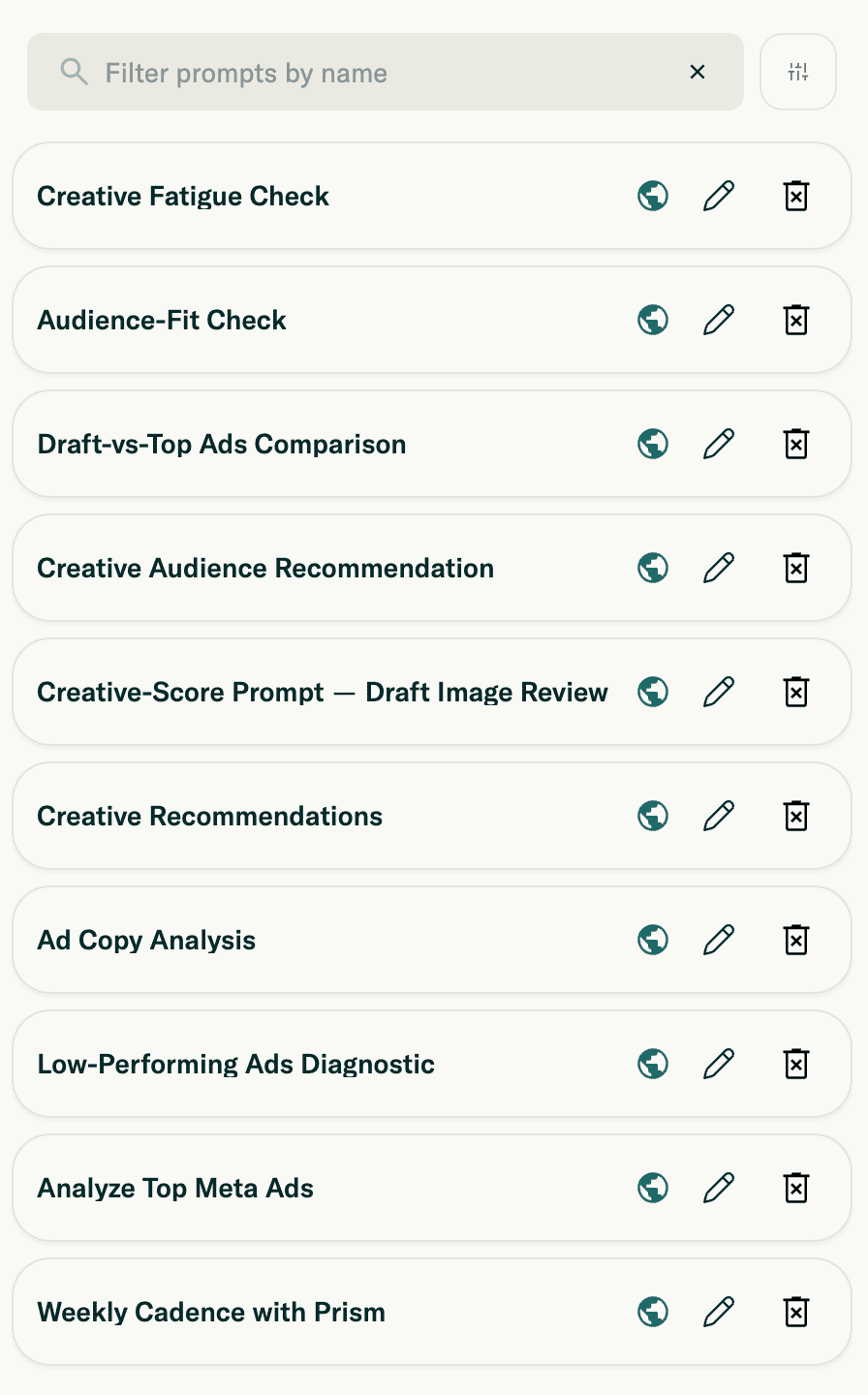We aren’t using a traditional product development roadmap at Pixis. We’re moving so quickly, working with so many unknowns, and learning new things so often that the cycles we’d spend iterating on the documentation would be a significant distraction at this stage.
Jason Widup, our SVP of Marketing, just posted about how that’s required us to change how we think and act on LinkedIn last week.
Eventually, we will have a roadmap that gives us more certainty on what we’re delivering and exactly when.
But for now, we’re leaning into clarity of vision and purpose. And transparency!
Transparency means we don’t need to wait for polish. Not waiting for perfect polish means we get feedback early. Which improves our ability to learn and move even faster.
To that end, I’m sharing a roadmap… of sorts. These are the problems the product and engineering team at Pixis are obsessed with solving for our customers right now.
Problems we’re solving for performance marketers
Scope of Insight
Specifically, our customers want cross-channel insights. Our customers have told us repeatedly that this is the thing they’d like us to solve first. They’ve got too much data, it’s all messy, it’s all in different places, and there are insights just waiting to be dug out.
So our first big effort is focused on giving Prism full, unfettered access to as many critical performance data sources as possible so it can perform analyses with full context.
Progress so far:
- Meta Ads (Facebook, Instagram, Audience Network)
- Google Sheets
Coming Soon:
- Google Ads
- SEMRush
- Shopify
Planned:
- TikTok
- AppsFlyer
Time to Insight
The platform performs at the speeds you’d expect of an LLM right now. We’ll of course work on that, but the biggest constraint right now isn’t the speed of the product, but a user’s ability to extract insights efficiently.
That’s a fancy way of saying we’ve got some user education and guiding to do. We’re working with marketing and CS to create content and enablement, but we’re also looking at some in-product solutions here.
The goal is to deliver real value to a new user on their very first prompt. This means the prompt has to be right. We’re building out a great prompt library, but that’s just the start.

Making it Easy to Execute on Insights
Prism already surfaces insights well, and makes some strategic recommendations, but our most important roadmap theme is actionability.
We want to see marketers shipping new creatives (with proper approvals) with a click. We want to see media buyers adjusting bid strategies as recommended by Prism with a simple confirmation.
As it stands, the platform does make it easier to ship changes by delivering a csv for upload to Meta Ads Manager, for example. That's something, but we believe no marketer should ever need to touch a csv file.
We have a product, Advance, which takes action on campaign optimization tasks via bid adjustments, budget reallocations, audience updates, etc. We’re already testing using the mechanisms in Advance as the engine behind budget optimization actions taken in Prism.
Another existing product, Adroom, allows our customers to use highly customizable generative AI to create brand-safe ad creatives and variants for testing, with governance steps and AI-powered recommendations. Because creative work necessitates an interface other than a chat, we know we aren’t going to serve most of these actions directly in Prism. Still, we want to build thoughtfully so the flow between Prism (chat for analysis, strategy, media planning and media buying) and Adroom (creative generation) feels natural.
Finding a new performance edge
The model already works as if it has direct experience in performance marketing, and deep contextual knowledge. We need it to continue to learn, and to be able to consider what-if scenarios accurately based on hypothetical, but still realistic modeling.
It also needs to do more than just react to user prompts, which it does very well right now:
We should think about doing this both passively in an always-on manner with alerts, and more actively when a marketer is directly engaged in optimization work.
It needs to be able to do this in multiple ways. By finding new audiences, by improving spend efficiency, by experimenting with creative, and by analyzing cross-channel, full-funnel impact of all activities.
Creative-specific insights
It’s really hard to get real insights about creative performance. Not which ones performed, but why. And once you think you know that, it’s hard to develop new creative based on those insights. All of that contributes to the friction between performance and creative teams.
We’ve begun testing an alpha of an AI agent specifically for analyzing creative and recommending variants. The team is doing some incredible work with heatmapping, copy analysis, readability, contrast, lighting, proportions, urgency, clarity, and other granular creative analyses.
We’re under no illusions that this is a challenge we’ll solve easily, though, which is why I’m keeping it on this list.
Governance and trust
We've added new, but still basic, visibility-based permissioning, but need to keep building out workflows that allow the right people to have the right amounts of control at each phase of campaign launch, management and optimization.
We’re also already SOC 2, ISO and GDPR compliant.
We know large brands with lots of agency stakeholders are likely to find the most use in Prism (their data is often most powerful but also most unwieldy), so we need to keep building here. We've started work on an audit-ready action log with rollback meta data so it's clear who did what via Prism.
Reliability and scale
Elastic scaling and cache layers are specced but haven't yet reached high prioritization. We anticipate there'll be times of day that represent heavy ingestion windows. Also, we’d expect huge spikes of activity around Black Friday and the winter holiday season.
We'll need to address that so Prism responses are always snappy regardless.
Insight explainability
Explainability is something we think is necessary for all AI technologies at this phase of adoption. We don't (and in some cases shouldn't) trust all AI implicitly.
Prism already shows its thinking process as it goes about pulling reports and doing analysis, but we can always do better here to surface not just what it was thinking about but why it was thinking it.
We know we need to show how our AI models work in layperson's terms so every suggestion can be understood via the actual data sources, models at work, and assumptions used. Just like you might ask a junior analyst to show their work.
Future Ideas
- Cross-user pattern learning. We want to develop ways that the lessons learned - the tacit knowledge - across all users at a customer brand can be stored and used to make that customer’s work better or easier.’
- Data health dashboards. We want the AI to be self-aware enough that it can report when data quality, completeness or accuracy may affect prompt response quality.
- SSO/SAML integration. This is a must-have, really.
- Prompt coach. We believe prompt engineering is a skill no user should have to learn for the long-term, but one that is undeniably important now. Ultimately, we want to make Prism work so well that we minimize how much a user needs to know about prompting to get value. In the meantime, we want to use the AI to help users prompt.
- Meeting mode. Most LLMs are used when nobody’s looking. We’d like to introduce true collaboration features that feel genuinely useful for live problem solving, as if the AI is contributing to meetings in real-time (when asked).

